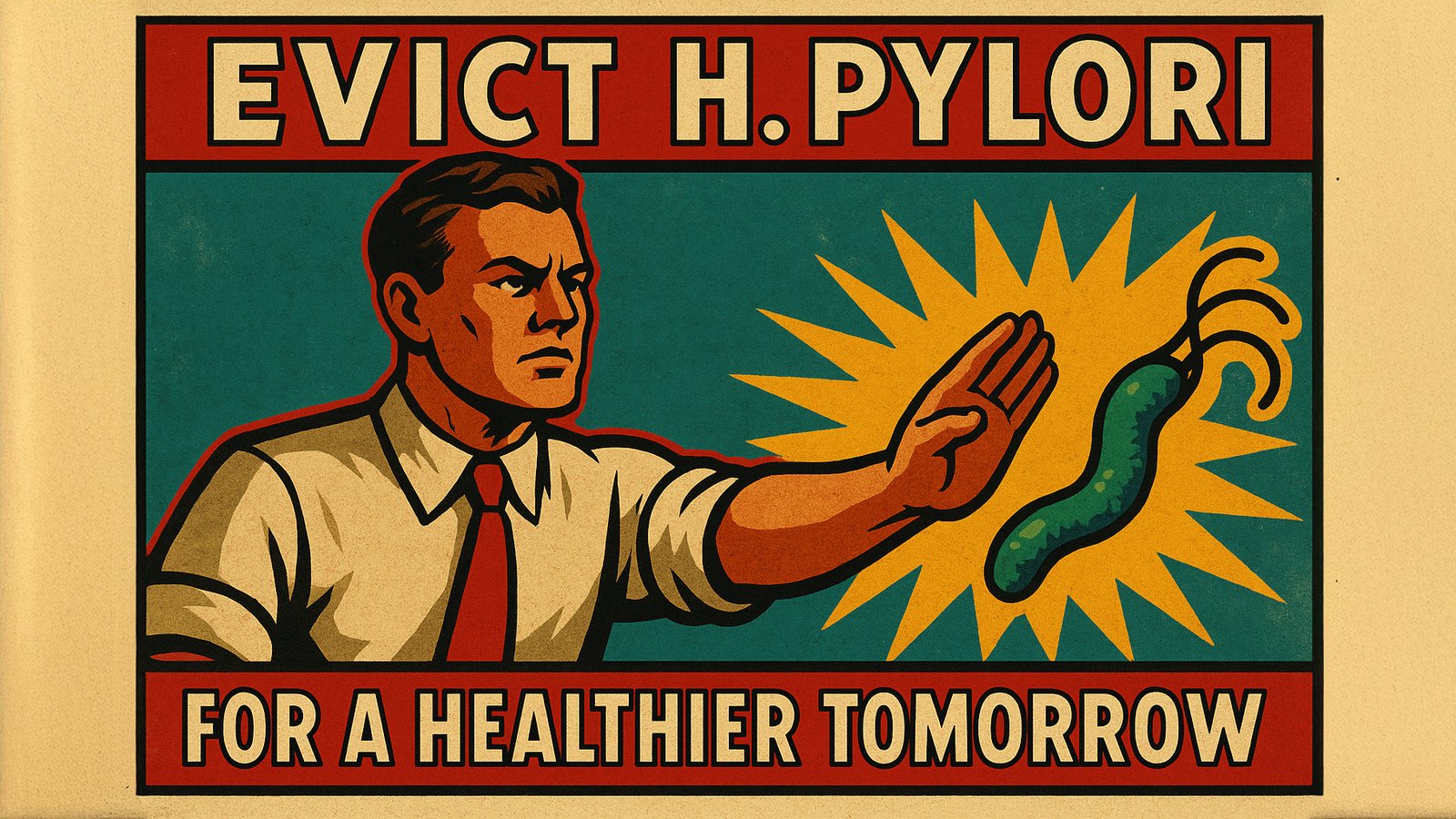Helicobacter pylori eradication dilemma: to treat or not to treat?
Helicobacter pylori eradication is one of those phrases that sounds like something out of a sci‑fi novel, but in reality it’s a battle going on inside millions of stomachs every day. Imagine a microscopic corkscrew‑shaped tenant that never signed a lease, moving in rent‑free, and throwing loud parties with your stomach acid. That’s H. pylori. Half the world has it, most don’t know, and for decades doctors have argued about whether we should be handing out eviction notices or just letting the little squatter stay put.
The story begins in the 1980s when two Australian doctors, Barry Marshall and Robin Warren, had the audacity to suggest that ulcers weren’t caused by stress or too much coffee, but by this wriggly bacterium. The medical establishment chuckled politely, and then Marshall did the most Australian thing imaginable: he drank a beaker of H. pylori, gave himself gastritis, and proved his point. Nobel Prize secured, ulcers renamed as bacterial property damage, and suddenly half the medical textbooks needed a rewrite.
Fast‑forward to now, and we’re still not entirely sure what to do about it. On one hand, H. pylori eradication clearly works wonders in people with ulcers. Get rid of the bug, the ulcers heal, and they don’t come back. It’s like fixing the roof leak by removing the hosepipe someone left running through your skylight. And the bonus? You also slash the risk of developing stomach cancer later in life. Public health officials love that bit. Nothing says victory like preventing tumours.
But here’s the catch. Most people with H. pylori never get sick. They walk around with their stomachs quietly colonised, none the wiser. For them, eradication therapy means a cocktail of antibiotics, proton pump inhibitors, and sometimes bismuth salts—otherwise known as that chalky stuff your nan swore by when she had indigestion. Side effects range from diarrhoea and nausea to an uneasy relationship with the bathroom. And because antibiotics are involved, every unnecessary prescription is another nudge towards the global problem of resistance. Clarithromycin, once the hero of the pack, is now about as reliable as a British train timetable.
So, the debate rumbles on. Should everyone with H. pylori be treated, or only those with ulcers, stomach pain, or a family history of gastric cancer? Western guidelines, like those from the Americans and the Europeans, increasingly lean towards treating everyone who tests positive. It’s a public health crusade: wipe it out, lower cancer rates, and maybe—just maybe—make humanity collectively less gassy. But critics argue this is overkill. Why nuke a bacterium that’s lived with humans for millennia, especially when it might not actually bother most of us? Some even suggest that eradicating H. pylori could upset the delicate balance of our gut microbiome, making us more prone to acid reflux, asthma, or obesity. Swapping one problem for another—very on brand for medicine.
The standard toolkit for eviction looks something like this. Triple therapy—PPI plus clarithromycin plus either amoxicillin or metronidazole—was once the gold standard. But with resistance rates climbing, it’s become about as effective as shouting at pigeons. Enter quadruple therapy: PPI, bismuth, tetracycline, and metronidazole. It’s less elegant, more like smashing the place up with a sledgehammer, but it works better in resistant regions. Ten to fourteen days of this regime, and then a test a few weeks later to make sure the bug really has gone. Because H. pylori is stubborn. It likes to linger, the kind of guest who doesn’t take the hint even when you’ve switched off the Wi‑Fi and started vacuuming around them.
Of course, context matters. In countries like Japan, Korea, or China, where stomach cancer rates are high, H. pylori eradication is practically a national policy. The idea is simple: treat everyone, reduce cancer, save lives. In low‑risk countries, the picture is fuzzier. If your chances of developing serious problems are slim, is it worth the antibiotics, the side effects, and the faint but worrying possibility that one day your GP won’t have an effective antibiotic left for something more dangerous? It’s the medical equivalent of deciding whether to demolish a slightly ugly shed because it might catch fire one day.
There’s also the personal angle. Imagine you’ve just tested positive during a routine check. You feel fine. No ulcers, no stomach ache, just the occasional regret after a late‑night curry. Your doctor looks at you and says, “We can treat it if you like.” Do you? On one hand, you don’t want to host a carcinogen. On the other, you don’t fancy a fortnight of antibiotics, dodgy bowels, and metallic aftertaste every time you eat. It’s not exactly a glamorous choice. Some patients shrug and say yes; others kick the decision down the road, hoping science will make its mind up properly before they have to.
The irony is that eradicating H. pylori is both one of medicine’s great success stories and one of its ongoing debates. We’ve gone from ulcers being lifelong burdens to treatable infections. Yet the question of what to do with silent carriers hangs in the air. The bug is a master of disguise, living quietly until it decides to start trouble. And doctors, bless them, have to balance the promise of prevention with the reality of over‑treatment.
Perhaps the future will bring personalised eradication. A genetic test that says, “You’re at high risk, you should treat,” versus “You and your bug can coexist peacefully.” Until then, the arguments continue, the antibiotic regimens evolve, and H. pylori remains both tenant and target. If you’re lucky, it will never bother you. If you’re not, it might one day remind you that your stomach is more fragile than you thought. And if you do go through eradication, just remember—you’re not just killing a bacterium. You’re participating in one of medicine’s longest‑running debates, right there in your gut.
